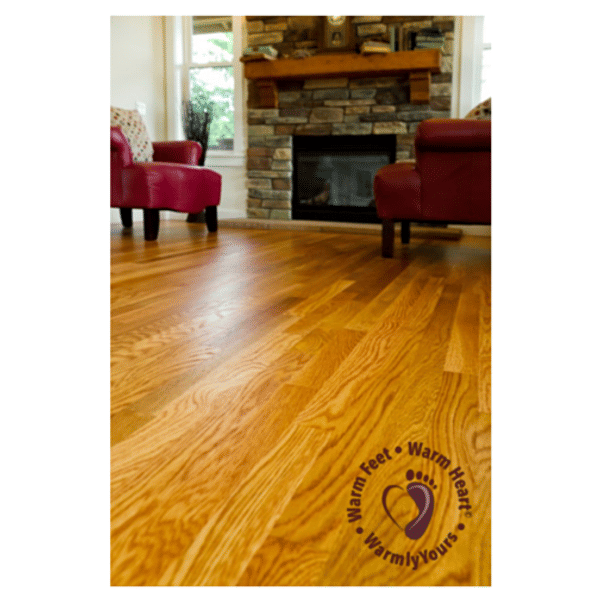Are your eyes tearing up? Maybe you’re subconsciously mourning the loss of summer now that Labor Day is over, but if you also have sneezing and a runny nose in addition to those watery (and sometimes itchy) eyes and you’re probably one of 35 million Americans who suffer from seasonal allergies, including fall allergies, which cost the U.S. economy more than $7 billion in lost productivity each year.

Fall allergy symptoms used to start in mid-August and run through September. However in many parts of the country these symptoms now begin in early August and extend through October. Some studies suggest that rising temperatures and higher carbon dioxide levels contribute to longer growth time of allergen-producing plants, according to the American Academy of Allergy, Asthma & Immunology.
While you can’t do anything about all the allergens floating around outside your home, and it is impossible to prevent every allergen from entering and circulating your home, you can effectively reduce the allergens in your home with smart short-term and long-term approaches.
SHORT-TERM RELIEF
To help reduce your allergy symptoms indoors, strive to keep your air as clean as possible.
“There’s no miracle product that can eliminate all allergens from the air in your home, but these suggestions may help,” advises Mayo Clinic:
- Use the air conditioning in your house and car.
- If you have forced air heating or air conditioning in your house, use high-efficiency filters and follow regular maintenance schedules.
- Keep indoor air dry with a dehumidifier.
- Use a portable high-efficiency particulate air (HEPA) filter in your bedroom.
- Clean floors often with a vacuum cleaner that has a HEPA filter.

“Know your triggers and, to keep offending allergens outside, don’t open windows on days when the pollen count is elevated,” recommends Andy Nish, MD, an allergist with the Allergy and Asthma Care Center in Gainesville, GA. (Go to aaaai.org/nab to find out the current pollen and mold levels in your area.)
If you’ve spent time outdoors, launder your clothes and shampoo your hair to avoid carrying around allergens or transferring them to indoor surfaces such as sofas and bedding. According to Dr. Nish, allergens that are tracked indoors can stay potent enough to cause symptoms for a few days.
Read more tips from Dr. Nish here.
RADIANT HEAT FOR LONG-TERM RELIEF
You, your family, and even your pets track allergens indoors all day long. Open the windows or doors and in comes more. And that is in addition to all the indoor allergens that already exist in your home such as dust mites, mold, and more. Regular cleaning helps dramatically, so does using recommended filters. However it is hard to eliminate all the allergens circulating in your home, and forced air heating systems can kick up and circulate those allergens throughout your home. Because of this forced air is frequently listed as an allergy offender, and for those with strong allergies, it isn’t always the best choice.
Radiant heated floors from WarmlyYours Radiant Heating do more than keep you toasty warm and make your home look beautiful, this powerful multitasker is your secret ally against seasonal allergies in four key ways.
1) Moving air means moving allergens.
Radiant heat doesn’t blow any existing allergens around. “If you’ve got mold, or spores or pet dander lying around, the blast of air from the heating system will set it in motion, according to Dr. Adrian Casillas, an assistant professor of medicine in the division of clinical immunology and allergy at the University of California, at Los Angeles, School of Medicine. “So then these allergens will be available to humans for a bit longer. That’s just one of the consequences of a system that blows things around.”

Instead, Casillas recommends radiant heat. “In the long run, a radiant heat system is probably better,” he says.
2) Heating the air heats and releases allergens.
Radiant heat doesn’t heat, burn, and further spread allergens in your home. Conventional forced-air distribution systems circulate dust and mold around the house; electric baseboards and forced-air heat also create surfaces hot enough to burn dust particles—which could introduce volatile chemicals or toxic particulates into house air (even passing through filters).
Veteran builder Max Strickland, of Burkholder Construction in Traverse City, Michigan, first became interested in radiant floor heating several years ago after his wife became chemically sensitive. He was worried about “frying the air” with conventional heating systems and felt that conventional filters on forced-air systems were not effective enough. Strickland went on to build an American Lung Association (ALA) Health House in Traverse City, and he now incorporates radiant floor heating into all the homes he builds.
3) Hot air causes dryness and irritation.
When relative humidity falls below 30 percent, discomfort increases and asthma and allergies flare up. The air in your home needs to have the right amount of moisture in it to be comfortable and healthy. Too much or too little moisture causes problems. For overall health and comfort, relative humidity should stay in the range of 30 to 60 percent, according to the article “Maintaining Household Moisture Balance” on “oikos.com. Check out the article for a chart on “Best Humidity Ranges for Human Health.”

4) Radiant floors can eliminate the need for carpeting.
Carpeting is a breeding ground for dust mites, a very common cause of allergic respiratory diseases. Even daily vacuuming will not remove the allergens that have settled down to the bottom of the carpet. Every footsteps puffs new and old allergens back up into the air. Even vacuuming can stir up more dust and allergens without capturing them all. Instead, regular mopping of tile, stone, and hardwood floors will remove allergens on the floors’ surfaces.
Allergy suffers “often don't realize how many things can aggravate their allergy symptoms, so they just muddle along and hope for an early end to the season,” said Dr. Myron Zitt, former ACAAI president, in a college news release. “But there's no reason to suffer,” he emphasizes. A few simple adjustments in habits and treatment can make life much more enjoyable.
This includes looking at short-term and long-term changes, which could include choosing radiant heated floors when you remodel. Creating as many “anti-allergy allies” as you can within the home will keep you from “muddling along” and help you radiantly enjoy your home and the season.
Sources:
http://www.nbcnews.com/id/3087986/ns/health-allergies_and_asthma/t/got-allergies/#.VBhJU_ldWSo
http://www.everydayhealth.com/year-round-allergies/most-common-fall-allergies.aspx
http://www.unitedallergyservices.com/spring-clean-allergens-away-reduce-seasonal-allergy-symptoms-by-targeting-your-homes-hot-spots/
http://www.aaaai.org/conditions-and-treatments/allergies.aspx
http://oikos.com/library/moisture/
http://www.oregon.gov/ENERGY/CONS/Pages/res/tax/Radiant.aspx
Like this post? Subscribe for updates
Related Posts



